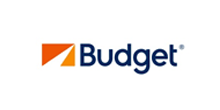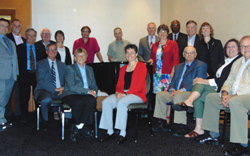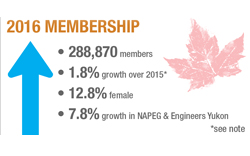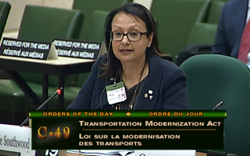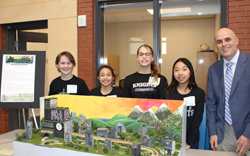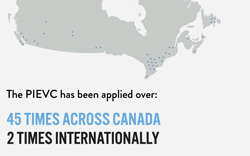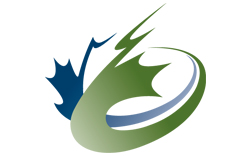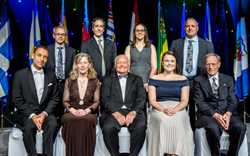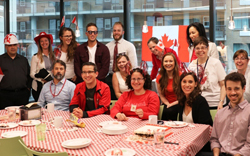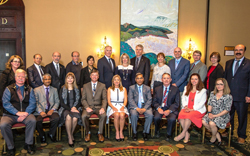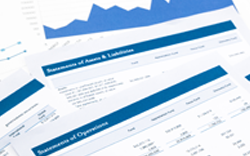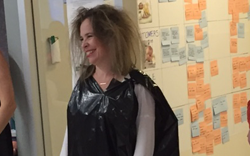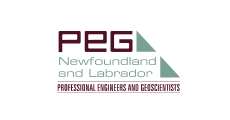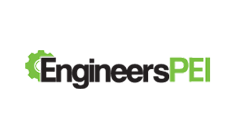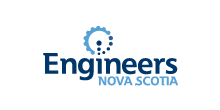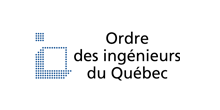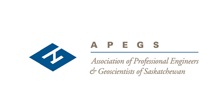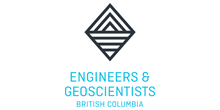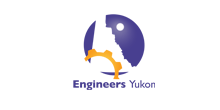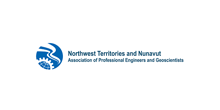President's Message

I am pleased to present the 2017 Engineers Canada Annual Report. Engineers Canada exists to serve the provincial and territorial engineering regulators, who protect the public by licensing engineers, ensuring engineers uphold the highest technical and ethical standards, and ensuring that only licensed engineers engage in engineering activities. Engineers Canada supports the regulators by providing academic accreditation and evaluation tools, guideline development, horizon-watching, forums for inter-regulator coordination, and national programs such as those that foster diversity and inclusion in the profession. In this Annual Report, you can learn how Engineers Canada, the regulators, and stakeholders worked together to advance the engineering profession in 2017.
In addition to its ongoing work, the past year has seen Engineers Canada undertake two important projects that will enable the organization to better serve the engineering regulators. The Governance, Strategic Planning, and Consultation Project was launched last year and will see the development and implementation of a new governance model, as well as a sustainable strategic planning process and a process for ongoing consultation with regulators and other stakeholders. We have consulted with each of the engineering regulators to ensure that Engineers Canada’s purposes and work are aligned with the expectations of the regulators, and we will continue to consult with them as we develop our three-year strategic plan to ensure we focus on those initiatives, projects, and undertakings that provide the most value for them. Our end goals are to fully embrace transparency and to focus our work to ensure that we maintain excellence in what we do.
2017 also saw much work being done to improve the accreditation system for engineering education. Our accreditation system remains one of the most important services that Engineers Canada performs on behalf of the regulators. However, it must evolve to keep pace with the changes that have taken place in the delivery of engineering education. The Accreditation Unit Task Force has been making positive progress to reconcile how we evaluate new training methods at our post-secondary institutions. Concurrently, the Accreditation Improvement Program has focused on improving the processes and technical systems involved with accreditation, developing a more robust stakeholder communication and consultation process, initiating and testing a training program, sourcing a new data management system, and establishing continual improvement processes to ensure that the accreditation system stays responsive to the evolving needs of Canada’s engineering profession.
In addition to these important projects, 2017 saw the continuation of Engineers Canada’s work on qualifications, mobility and foreign credential recognition, research on trends in engineering education and the engineering profession, federal government relations, diversity and outreach, and climate resilient infrastructure. We’ve improved our insurance and financial offerings for engineers and their families, and we’ve celebrated individual engineers and teams of engineers for their engineering excellence and contributions to the profession. The year’s activities have spanned an incredible range and I hope that you will share my pride as you read this report and the accomplishments it describes in these key areas.
In December 2017, we announced that Gerard McDonald, MBA, P.Eng., would be joining Engineers Canada as our new Chief Executive Officer. Gerard’s strategic thinking, experience, and leadership will be a welcome addition to the organization as we continue to make progress on our important initiatives in the coming year, including one of our most significant governance, strategic planning, and consultation exercises. The Engineers Canada Board looks forward to working with Gerard, and we offer our deepest gratitude and appreciation to Stephanie Price, P.Eng., CAE, for serving as Interim Chief Executive Officer throughout 2017.
As we reflect on our 2017 activities, I would also like to thank the Engineers Canada staff, Board members, member regulators, and volunteers for their hard work this past year and for their ongoing commitment to advancing the engineering profession. It has been an honour to serve as President, and I look forward to seeing what we will accomplish together in 2018.
Russ Kinghorn, MBA, FEC, P.Eng., IntPE
President
1. Governance and process enhancements
At the March 2017 meeting of the Engineers Canada Board, the Board decided to seek an alternative governance model to the Carver Policy Governance approach. The Governance, Strategic Planning, and Consultation Project was launched in May 2017 to encompass:
- updates to the governance model
- development of a sustainable strategic planning process
- development of an effective process for ongoing consultation with the engineering regulators and other key stakeholders
- operationalizing the consultation and strategic planning processes with Engineers Canada staff
Consultations with the provincial and territorial regulators on the governance model and the size of the Engineers Canada Board took place in the fall of 2017, and resulted in revised Guiding Principles, Purposes of Engineers Canada, Board Responsibilities, a number of changes to Board structure, and a plan to reduce the size of the Board, all of which were supported by the full Board at their February 2018 workshop.
The Governance, Strategic Planning, and Consultation Project will continue until July 2019, and the Board is currently developing a three-year strategic plan for the 2019-2021 period, a draft of which will be brought to the provincial and territorial engineering regulators for consultation in March and April 2018.
2. Accreditation Board
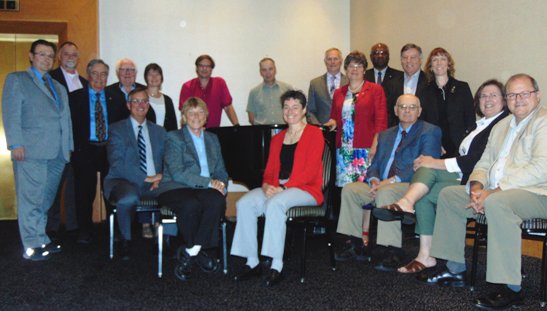
In 2017, the Accreditation Board completed on-site peer reviews of 25 programs at 13 higher education institutions to determine if those engineering programs meet or exceed the educational standards for professional engineering licensure. Four new engineering programs were granted accreditation in 2017.
a. Washington Accord
Accreditation Board members also reviewed documentation and provided advice to the Engineers Canada delegation attending the annual International Engineering Alliance meeting in June 2017. During that meeting, Washington Accord signatories admitted Pakistan—as represented by the Pakistan Engineering Council—as a new member signatory. Effective from 2017 onwards, engineering programs accredited by the Pakistan Engineering Council will now be recognized by the other Washington Accord signatories as being substantially equivalent.
b. Accreditation Unit Task Force
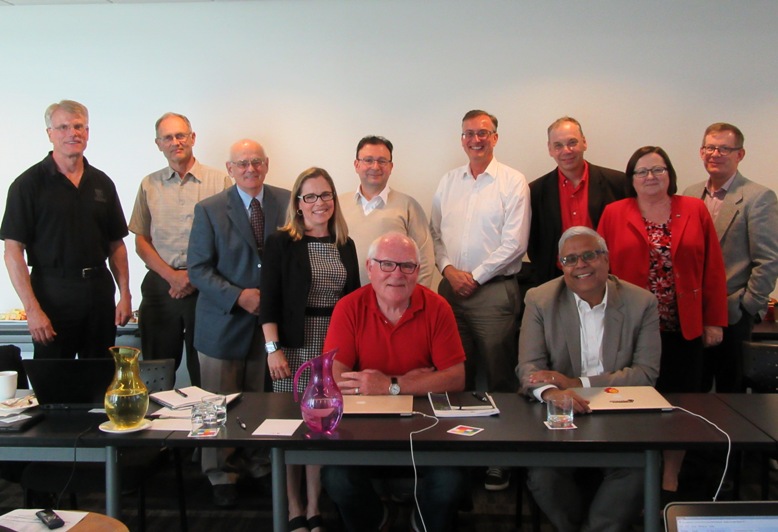
In 2017, the Accreditation Unit (AU) Task Force performed significant research to examine the current curriculum content methodology in Canada, and to examine systems used by other engineering accreditation organizations around the world. The Task Force met in July to identify and define a process to refine AUs to adjust to changes and developments in engineering education. The Task Force has identified possible short- and longer-term changes to existing criteria and to accreditation procedures, and has developed a short-term action plan with deliverables and timelines. The Engineers Canada Board received the Task Force’s report in February 2018, and consultation on the report recommendations will follow.
c. Accreditation Improvement Program
In 2017, Engineers Canada launched the Accreditation Improvement Program (AIP), which is focused on operational improvements to accreditation through the sourcing and implementation of a data management system for accreditation (and Enrolment and Degrees Awarded Survey), enriching consultation and communication with stakeholders, enhancing volunteer training, and putting in place continual improvement processes that can adapt to changes in criteria or other shifts in the accreditation landscape.
The AIP team initiated the sourcing of a new Accreditation and Enrolment and Degrees Awarded data management system focused on making it easier for higher education institutions and accreditation volunteers to input data and perform other tasks during the accreditation process and the Enrolment and Degrees Awarded Survey. An RFP was issued in late 2017 that was the result of consultation with both internal and external key stakeholders to understand business needs, functional requirements, non-functional requirements, and the data model. A stakeholder advisory group was established and provided advice to the final RFP content and process including the requirements and data model. In 2018, this advisory committee will continue to provide advice as the program completes vendor selection, planning with vendor and initiates next steps for this technological solution.
3. Qualifications Board
In 2017, the Qualifications Board published the following new or updated documents:
- Revised Guideline on admission to the practice of engineering in Canada
- Computer Engineering Syllabus
- Engineering Physics Syllabus
- Industrial Engineering Syllabus
- Petroleum Engineering Syllabus
It sent out three draft General Directions and two revised Guidelines for consultation, and held two cross-country calls on continuing professional development, and two teleconference calls for the Environment Officials Groups. The Qualifications Board also hosted a webinar on the Guideline on Sustainable Development and Environmental Stewardship.
2017 also saw the Qualifications Board undertake a number of quality improvement initiatives. A new work plan was adopted to ensure that Qualifications Board’s work better aligns with the priorities of the regulators. A new Communications Strategy and Plan was also developed to improve how the Qualifications Board communicates with and engages the regulators and other stakeholders in their work. A new guideline development and review process was also instituted to improve expediency and content of the Qualifications Board guidelines.
4. Officials Groups
Engineers Canada facilitates individuals from the engineering regulators working together with a sense of community to strengthen the profession. These Officials Groups facilitate ongoing cooperation and collaboration through meetings, discussions, and information-sharing on matters relevant to advancing the competency, integrity, and public accountability of the profession.
a. National Admissions Officials
The National Admissions Officials Group (NAOG) met three times in 2017, established a two-year work plan, and scheduled initiatives for the next 12 months. These initiatives include ensuring that the National Membership Database remains a useful tool for regulators, reviving the National Reference Points project, and addressing the use of risk-based applicant profiles.
The NAOG also worked closely with the Qualifications Board in 2017. In September, a task force comprised of Admissions Officials, delivered their recommendations about the future use of the International Institutions and Degrees Database, and how the database could further meet the needs of the Admissions Officials. Also in Fall 2017, a workshop and conference call with the NAOG were held to collect feedback on Qualifications Board consultations.
b. National Practice Officials
The National Practice Officials Group held four teleconferences and one annual in-person meeting in 2017 in order to share information, discuss policies, and learn from the promising practices of each regulator as they related to Professional Practice. The Group developed and refined a work plan with initiatives focused on key topics, such as continuing professional development programs and national criteria for digital signatures.
c. National Discipline and Enforcement Officials
The National Discipline and Enforcement Officials Group held quarterly teleconferences and one annual in-person meeting in 2017 to network and exchange information, learn about best practices, and collaborate on shared goals. The group also developed and refined a work plan with initiatives focused on key topics, such as the sharing of discipline decisions.
5. Mobility and foreign credential recognition
Engineers Canada works to facilitate the recognition of engineering credentials for those moving across Canada and internationally, which aims to improve the mobility of engineering knowledge and services for the public, and for engineers and engineering graduates at all stages of their career.
a. Online competency-based assessment
In 2016 the CEOs of the provincial and territorial regulators agreed that Engineers Canada should adopt Engineers and Geoscientists British Columbia’s online competency-based assessment framework as a national online tool to be made available to all regulators. A funding agreement was signed in 2017 between Engineers Canada and Engineers and Geoscientists British Columbia, and two new groups were convened. The User Steering Group met in person three times and held bi-weekly calls to review progress on piloting British Columbia’s system and to consult on the ongoing development of the national competency-based assessment tool. Likewise, the Business Model Group met in person once and held two calls to discuss operational agreements between the participating regulators.
Adopting competency-based assessment will improve the assessment of work experience for both domestic and international applicants by providing better clarity and transparency in the assessment process. The move to an online system allows applicants to report from anywhere in the world, and reduces administrative burden for regulator staff.
b. Roadmap to Engineering
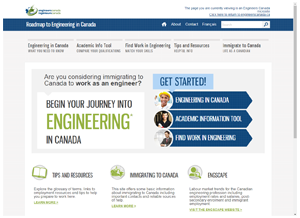
The Roadmap to Engineering website is an interactive tool intended to provide international engineering graduates with an understanding of the engineering profession in Canada and the licensing process. In 2017, the Roadmap to Engineering was visited by 29,564 new visitors, 70 per cent of whom are from outside of Canada, including countries such as India, the United States, Brazil, Mexico, Spain, the United Kingdom, Saudi Arabia, the United Arab Emirates, and Colombia.
The Roadmap website also has a self-assessment tool that international engineering graduates can use to compare their engineering degrees with Canadian degrees, and which can assist them in making a decision about immigrating to Canada. In 2017, this Academic Information Tool was used by 13,326 people.
c. International Institutions and Degrees Database (IIDD)
Engineers Canada’s Foreign Credential Recognition team maintains the International Institutions and Degrees Database (IIDD), a tool that is used primarily by engineering regulator admissions staff as one of many inputs for assessing the educational credentials of internationally-trained applicants. Of the more than 4,000 institutions contained in the IIDD, the Foreign Credential Recognition team researched and updated the entries of 993 institutions in 2017, in addition to continuously updating notes on countries and mutual recognition agreements.
d. Mobility Register
Engineers Canada’s Mobility Register grants qualified engineers designations that indicate they are part of an exclusive group of professionals who meet a high standard of competence and who are prepared to conduct engineering practices internationally. In 2017, Engineers Canada performed an audit of applicants and submitted results to the International Engineering Alliance. In total, 23 new registrants were added to the Mobility Register in 2017.
6. Research
Engineers Canada provides research services to support and advance the engineering profession. This research is meant to inform decision-making for Engineers Canada and its stakeholders.
a. National Membership Report
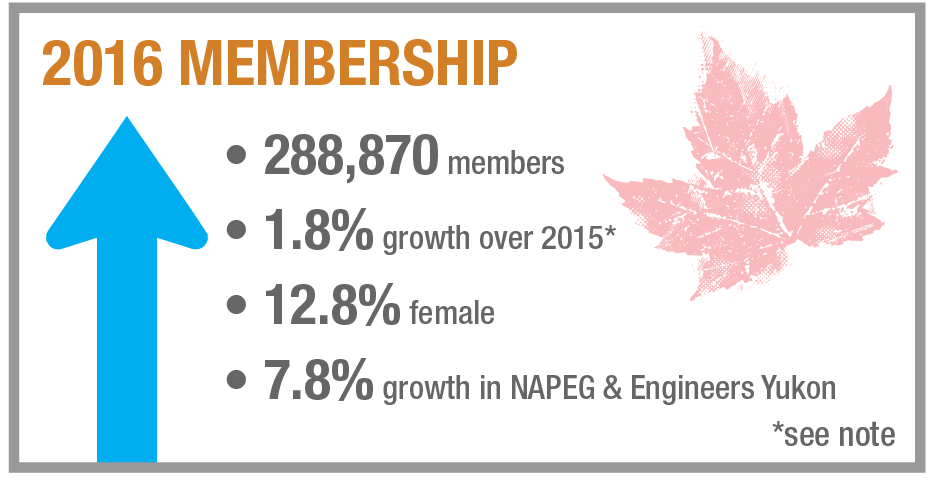
Each year, Engineers Canada reports on trends in the membership of the provincial and territorial engineering regulators in its National Membership Report. The 2017 report gathered data from 2016, and found that there were 288,870 members of the twelve engineering regulators, of which 12.8 per cent were female. Total membership increased by 1.8 per cent, while female membership increased by 4.5 per cent. The report also included data on the residency of engineers, the number of engineers per 1,000 people, and the number of engineering students who proceeded along the path to obtaining their professional engineering licence.
b. Final Year Student Exit Survey
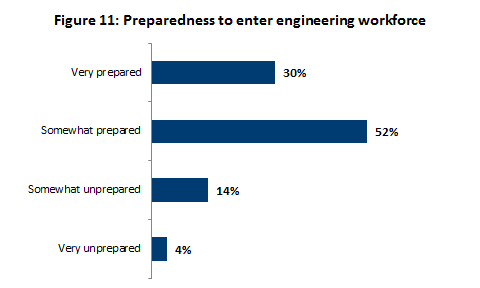
Engineers Canada regularly surveys students in their final year of engineering studies to learn more about their reasons for entering engineering, their experiences while studying engineering, and their future plans. In 2017, Engineers Canada surveyed 2,485 final-year students and published the findings in its annual Final Year Student Exit Survey Report. Findings indicated, among other insights, that eight in 10 graduates feel prepared to enter the engineering workforce and roughly the same number intend to eventually apply for their professional engineering licence.
c. Enrolment and Degrees Awarded
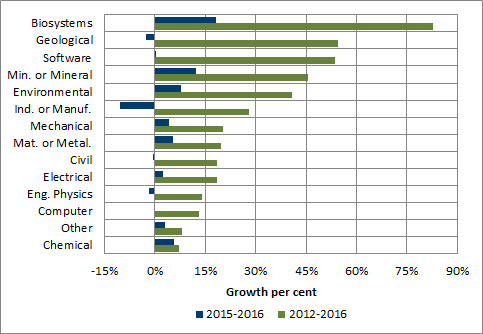
Engineers Canada’s annual Engineering Enrolment and Degrees Awarded Report surveyed 49 post-secondary institutions in Canada last year and revealed trends specific to discipline, education, and gender, as well as the number of engineering graduates available to enter the labour market, international students’ participation in Canadian engineering education, and students studying in co-op programs.
Canadian post-secondary institutions continued to report a strong growth in the number of students pursuing engineering degrees. Undergraduate enrolment increased a total of 21.3 per cent from 2012 and 3.0 per cent from 2015, reaching 84,406 students in 2016. Every engineering discipline displayed higher undergraduate enrolment numbers in 2016 than in 2012. The proportion of female students enrolled in undergraduate and master’s engineering programs established new records, reaching 20.7 per cent and 25.3 per cent of total enrolment, respectively.
d. Engineering labour market (EngScape)

In 2017, Engineers Canada continued to maintain the EngScape website, meant to be a valuable tool for anyone looking for information about engineering, or attempting to navigate the world of engineering careers. With statistics and data about employment rates, salary, post-secondary enrolment and diversity, EngScape breaks this information down by engineering discipline and by province. Additionally, the site compiles engineering job postings from a variety of online sources, providing one-stop-shopping for anyone looking for engineering jobs in Canada. The site saw more than 1,000 visits in 2017, with more than 30,000 page views.
7. Government Relations
Engineers Canada provides evidence-based views on matters of public policy that affect the engineering profession, and influences government policy- and decision-making on issues of interest to the profession. Engineers Canada government relations work ensures that engineers are involved in the creation of public policy, and that engineering expertise is used in drafting and reviewing public policy.
a. Government submissions and testimony
Engineers Canada’s government relations team actively advocates for the engineering regulators and the engineering profession in front of the federal government on a range of issues that affect the engineering profession and its regulation. In 2017, Engineers Canada secured a number of opportunities to testify in front of House of Commons and Senate committees to provide the federal government with an engineering perspective and recommendations on legislation, policies, and issues.

Jeanette M. Southwood
In May 2017, Engineers Canada’s Jeanette M. Southwood, FCAE, FEC, LL.D. (h.c.), P.Eng., IntPE, testified in front of the House of Commons Standing Committee on the Status of Women to provide the engineering profession’s perspective on the economic stability of women. Southwood’s verbal and written testimony brought forward recommendations for addressing the challenges that discourage women from entering and/or from remaining in the engineering profession, which, with its stability and competitive salaries, could be an important factor in women’s economic stability.
In September 2017, Southwood also appeared before the House of Commons Standing Committee on Transport, Infrastructure and Communities as part of its study on Bill C-49 and the Transport Modernization Act and other associated acts. Southwood’s testimony, and Engineers Canada’s written submission to the committee, focused on the Railway Safety Act and recommended that professional engineers be involved in the entire life cycle of railway infrastructure, and climate vulnerability assessments be carried out on Canada’s rail infrastructure.
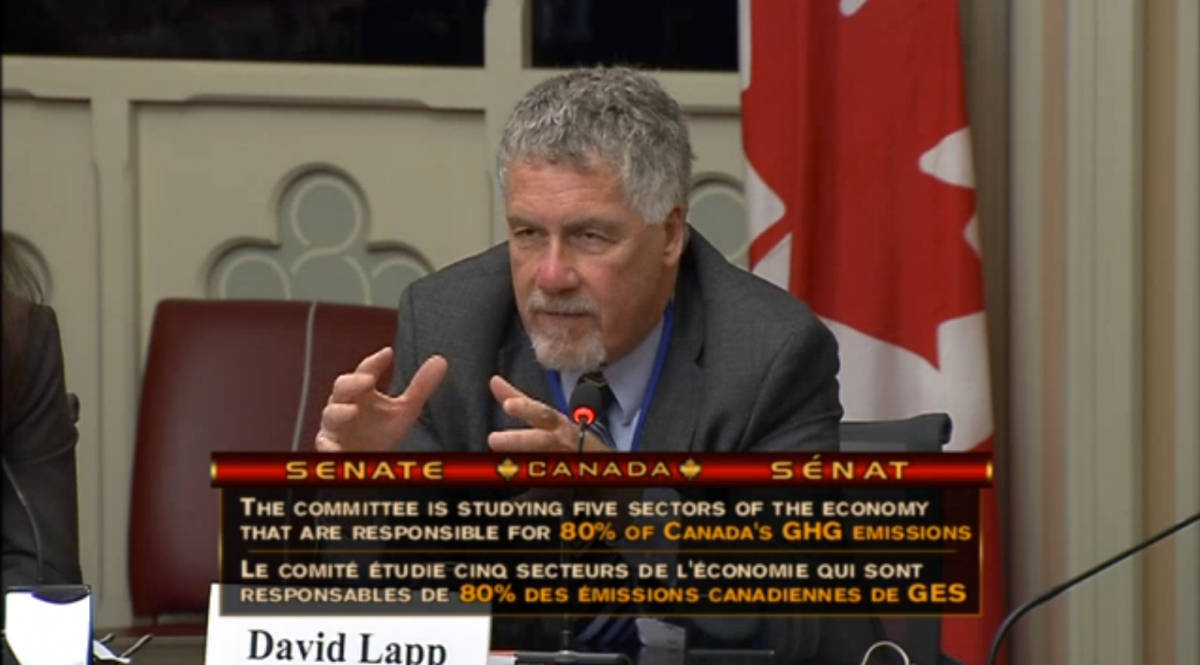
In October 2017, Engineers Canada’s David Lapp, FEC, P.Eng., IRP, testified and answered questions in front of the Senate Standing Committee on Energy, the Environment and Natural Resources as part of its study on the effects of transitioning to a low-carbon economy as required to meet the Government of Canada’s announced targets for greenhouse gas emission reductions. Lapp’s testimony focused on the engineering profession’s efforts in supporting the decarbonization of the built environment.
Engineers Canada also submitted written briefs and recommendations to the government on environmental and regulatory reviews and on the development of the 2018 federal budget.
b. Trade Agreements
In 2017, Engineers Canada consulted with Global Affairs Canada on the negotiations of the Canada-European Union Comprehensive Economic and Trade Agreement (CETA) and on the renegotiation of the North American Free Trade Agreement (NAFTA) with the United States and Mexico. In both cases, Engineers Canada monitored the negotiations, submitted recommendations to Global Affairs Canada, and defended the interests of the engineering profession as they pertain to the trade in engineering services and the mobility of engineers across international borders.
c. Hill Day 2017

Engineers Canada hosted its annual Hill Day on Parliament Hill on March 9, 2017. Members of the Bridging Government and Engineers Committee, Deans of engineering faculties, volunteers, and Engineers Canada staff met with 41 members of Parliament to discuss how engineers can provide valuable, evidence-based, and unbiased advice in public policy and decision-making. In particular, the meetings addressed Engineers Canada’s government relations priorities, namely: the importance of climate-resilient infrastructure, the value of increasing diversity in the engineering profession, and the need for funding for STEM education research.
d. Issue statements
Issue Statements are meant to quickly respond to government actions or emerging issues that affect the engineering regulators or the engineering profession. In 2017, the Public Affairs team developed two new Issue Statements in response to issues affecting the engineering profession:
e. National Position Statements
Engineers Canada uses National Position Statements to outline the public policy priorities of the engineering profession in our conversations with government. These statements provide evidence-based perspectives on matters of public policy that affect the engineering profession.
In 2017, the Public Affairs team updated all National Position Statements to reflect the most up-to-date information available. Two new National Position Statements were also developed and approved by the Engineers Canada Board:
8. Diversity and Outreach
Engineers Canada offers a national forum for collaboration to allow individuals and organizations from across the country to take action on increasing the diversity of the profession. Through these partnerships, Engineers Canada works to promote STEM—and engineering in particular—to youth, women, and Indigenous peoples.
a. Youth
Engineers Canada has four programs through which to introduce youth to the world of engineering: National Engineering Month, Future City, the engineering Girl Guides crest, and the Go Eng Girl program.
National Engineering Month 2017 saw more than 560 events take place across Canada organized by hundreds of volunteers from the provincial and territorial regulators. Pages on Engineers Canada’s National Engineering Month website—a destination for youth, parents, teachers, and others to learn about and explore the range of possibilities that engineering can offer—were viewed more than 250,000 times during March 2017. The Chart Your Course interactive feature on the website, which invites visitors to learn how their interests might lead to a career in engineering, was completed over 500 times during the month.
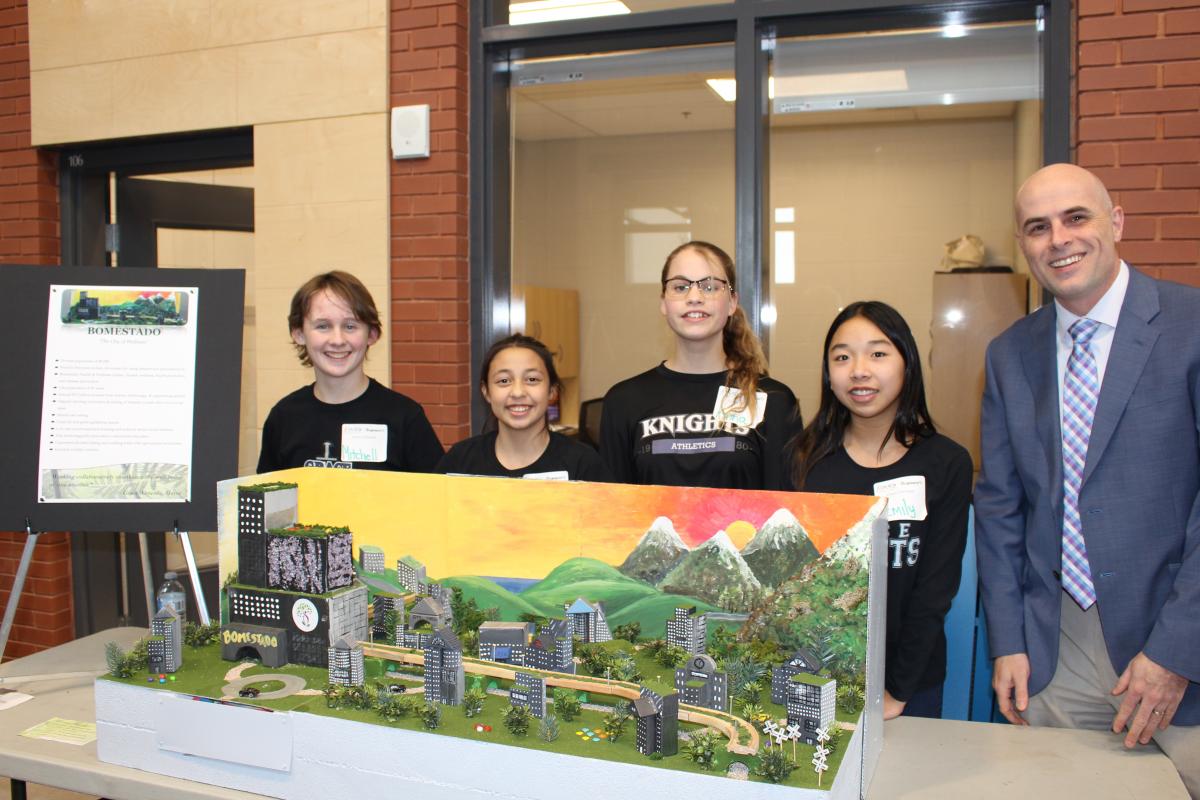
Engineers Canada brought Future City—a program that has been running in the United States since 1992—to Canadian classrooms for the first time in the 2016-2017 academic year, with the first Canadian competitions taking place at the Durham District School Board in Ontario, and in Prince Edward Island in January. Overall, 1,365 students in grades 6, 7, and 8 from 61 schools participated in the Future City program. Sixty-seven teachers integrated the Future City program into their class curriculum, introducing students to the engineering design process and challenging them to design and build a scale-model of a city 100 years into the future that integrated innovative, multi-use public spaces.
Engineers Canada launched its engineering Girl Guides crest in late 2016, a crest that is to be presented to Girl Guides nation-wide who complete engineering-related activities under the supervision of an engineer or an engineer-in-training. In 2017, more than 9,000 girls participated in an engineering-related activity to earn their engineering crest.
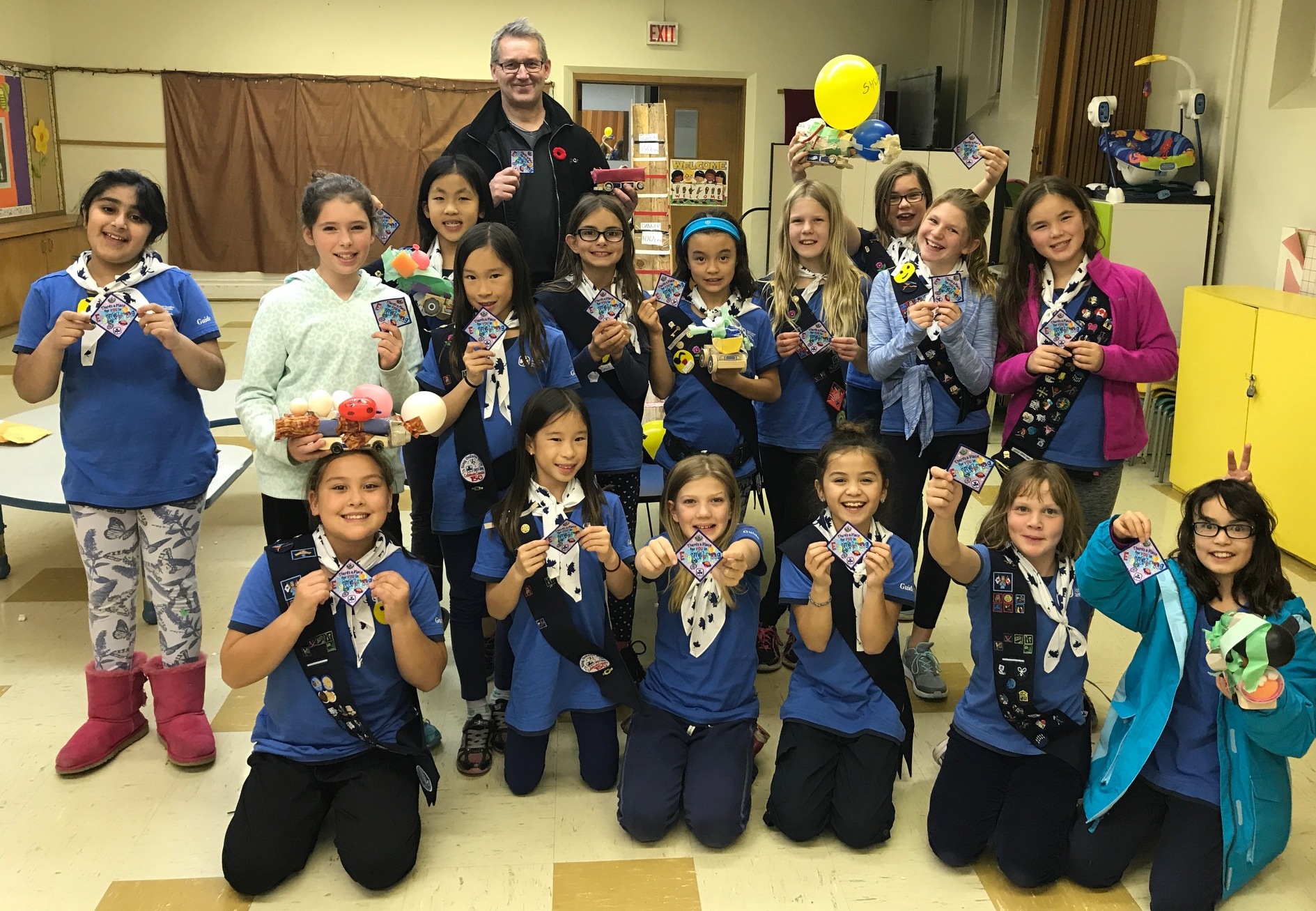
Also in 2017, Engineers Canada enabled the expansion of the Go Eng Girl program to Prince Edward Island. In October, girls in grades 7-10 and their parents visited the University of PEI to learn from women professionals, academics, and students about the world of engineering. Started in Ontario by the Ontario Network of Women in Engineering (ONWiE), Go Eng Girl has recently expanded to other provinces, and Engineers Canada was happy to support UPEI by enabling them to deliver the program to students and parents free of charge.
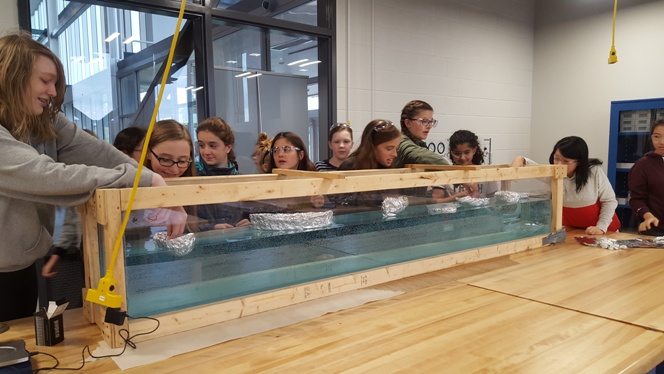
b. Students
Engineers Canada continued its longstanding partnership with the Canadian Federation of Engineering Students (CFES) in 2017. Engineers Canada once again supported CFES' three national student events—Congress, the Canadian Engineering Competition, and the Conference on Diversity.
In January 2017, Engineers Canada, in collaboration with TD Insurance, also announced that it was expanding its home and auto insurance program to now offer preferred rates to students enrolled in accredited engineering programs at Canadian post-secondary institutions.
c. Women
2017 saw Engineers Canada participate in a number of initiatives to advance its advocacy and support for women in the engineering profession.
In March 2017, Engineers Canada participated in the Global Marathon, DiscoverE’s annual virtual conference for and about women in engineering and technology. Four Canadians participated in conference sessions, including Engineers Canada staff and committee volunteers, while over 120 Canadians logged in to attend the sessions.
In June, Engineers Canada participated in the first-ever International Women in Engineering Day (INWED). In a video message, Interim CEO Stephanie Price, P.Eng., CAE, used the occasion to challenge the engineering community to get to 30 by 30.
Engineers Canada partnered with the National Science and Engineering Research Council (NSERC) in 2017 to organize Gender Summit 11. Engineers Canada was a member of the Summit Steering Committee and joined close to 600 advocates of gender equality from the worlds of science, technology, engineering, and math at the conference in Montreal, QC, in November. Delegates discussed how to make gender equality in research and innovation the norm and how to embed gender as a primary dimension of quality.
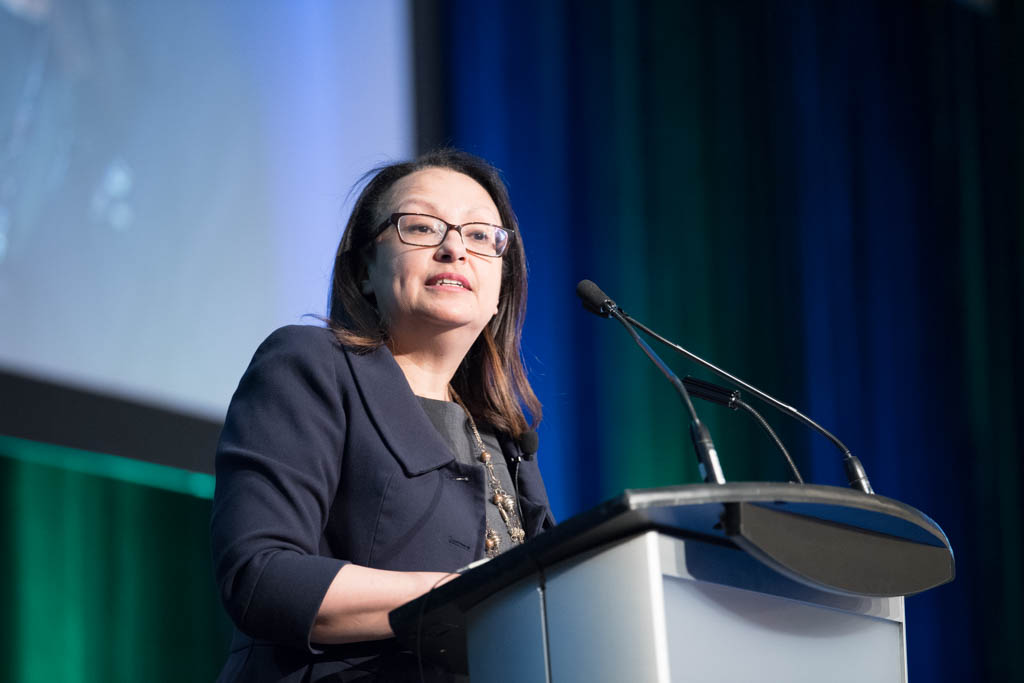
Also in 2017, the 30 by 30 Champions group convened three times, and a Champion from Engineers Canada’s CEO Group was appointed. These Champions are composed of representatives from each organization who have pledged support for the 30 by 30 goal—Engineers Canada’s commitment to raising the percentage of newly licensed engineers who are women to 30 per cent by the year 2030.
d. Indigenous peoples
Members of the Canadian Indigenous Advisory Council (CIAC) began meeting regularly as a working group in October 2015 at the American Indian Science and Engineering Society (AISES) National Conference to provide guidance on the implementation of a Canadian region of AISES. These meetings and discussions culminated with the establishment of the CIAC in September 2017 at the AISES National Conference, and with recognition by AISES of the new Canadian Region of AISES (.caISES) on November 10, 2017.
e. Engineering Change Lab
2017 saw great progress for the Engineering Change Lab, of which Engineers Canada is a co-founder, sponsor and Champion. The Change Lab is a catalyst for evolving Canada’s engineering community to help steward the application of science and technology and address the challenges of our time. In April 2017, the J.W. McConnell Family Foundation recognized the important work being undertaken by the Change Lab, and granted it $420,000 worth of funding, spread over four years. The Suncor Energy Foundation also announced that it will increase its financial contribution to $530,000 over the next three years in recognition of the significant opportunities in the next phase of the Change Lab including increased workplace level efforts, and exploring the connection to specific regional and engineering-related challenges like energy transition and the future of cities.
9. Climate resilient infrastructure
a. Public Infrastructure Engineering Vulnerability Committee (PIEVC) Protocol
In 2017, Engineers Canada completed license agreements for use of the Public Infrastructure Engineering Vulnerability Committee (PIEVC) Protocol for eight projects across Canada. These eight projects included two projects in First Nations communities. Engineers Canada served as an advisor and external reviewer to the Akwesasne First Nations in a project to apply PIEVC to their community water and wastewater treatment system. The final report from that project was delivered in November 2017. This was followed by application of a modified version of the PIEVC Protocol in two other First Nations communities, Oneida First Nation and Moose Factory First Nation that will be completed in the first quarter of 2018. Engineers Canada also advised the Vancouver Island Health Authority on a climate risk assessment of the Nanaimo Regional General Hospital using the PIEVC Protocol, and the City of Surrey on applying a “lite” version of the PIEVC Protocol to their Coastal Sea Level Rise Strategy.

Four sponsored PIEVC training workshops were also delivered in 2017, including at Engineers Yukon as part of their Annual General Meeting, the City of Prince George, the Capital Victoria Regional District, and the Ontario Ministry of Environment and Climate Change. Engineers Canada was also invited to make presentations on the PIEVC Protocol and climate change at 15 meetings, conferences, and seminars in 2017.
Internationally, 2017 saw the PIEVC Protocol being applied at the Colegio of Costa Rica as part of their Guanacaste Water Supply Project. Engineers Canada also signed a $600,000-grant agreement with the German international development agency (GIZ) for PIEVC capacity-building in three countries—Brazil, Costa Rica, and Vietnam—as well as in the Nile River Basin as part of the GIZ project, Enhanced Climate Services for Infrastructure Investment, 2017-2020.
b. Infrastructure Resilience Professional (IRP) certification
In 2017, Engineers Canada completed the development of an online course on the Public Infrastructure Engineering Vulnerability Committee (PIEVC) Protocol, an Asset Management Course for Engineers, and a Risk Management Course for Engineers, all of which are designed to satisfy the requirements of Engineers Canada’s Infrastructure Resilience Professional (IRP) credential. The Asset Management course was delivered online for the first time in 2017, with 17 participants enrolled. The Climate Law for Engineers course—another requirement for the IRP credential—was delivered twice to 30 participants. In total, there are now seven engineers certified as Infrastructure Resilience Professionals.
10. Member Services
Engineers Canada works to ensure that customized services and products are available for every stage of an engineer’s career.
In 2017, Engineers Canada continued to grow and augment its insurance plans and financial services for professional engineers:
- Engineers Canada and TD Insurance signed a new agreement, effective from January 1, 2018 until December 31, 2029, with an increase in the overall sponsorship fee as well as customized marketing plans to be developed with Engineers Canada, TD Insurance, and each engineering regulator.
- Successful negotiations resulted in a 40 per cent reduction in the Investment Management Fees on all funds in the Financial Security Program with Great-West Life, effective February 2018.
- In collaboration with Manulife, Engineers Canada enhanced the Term Life Insurance product by reducing the insurance rates, increasing the Higher Volume Discount Savings, and developing a new Waiver of Premium related to job loss, benefits that professional engineers will be able to take advantage of starting on April 1, 2018.
- In collaboration with Pro-Form Sinclair, Engineers Canada completed a market review for the Secondary Professional Liability Insurance Program that resulted in coverage enhancements, new coverage inclusions, and reduced costs.
11. Trademark Protection
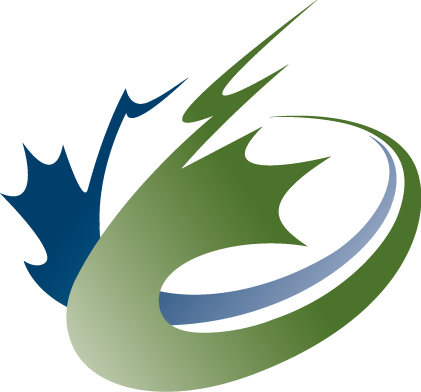 On behalf of the provincial engineering regulators, Engineers Canada holds and administers a portfolio of intellectual properties that includes official marks and registered trademarks, including registered certification marks. Engineers Canada is the owner of an official mark for each of the following professional engineering designations:
On behalf of the provincial engineering regulators, Engineers Canada holds and administers a portfolio of intellectual properties that includes official marks and registered trademarks, including registered certification marks. Engineers Canada is the owner of an official mark for each of the following professional engineering designations:
- ENGINEER
- ENGINEERING
- CONSULTING ENGINEER
- PROFESSIONAL ENGINEER
- P.ENG.
- GÉNIE
- INGÉNIERIE
- INGÉNIEUR CONSEIL
- INGÉNIEUR
- ING.
Working with the provincial and territorial regulators, Engineers Canada provided its consent to 35 requests in 2017 from engineers looking to register a federally incorporated company containing “engineering” or related terms in their names.
12. Celebrating Engineering Excellence
a. Engineers Canada Awards

Each year, Engineers Canada honours outstanding Canadian engineers, teams of engineers, engineering projects, engineering achievements and engineering students with the annual Engineers Canada Awards program. Last year’s recipients were:
Back row, from left to right:
- Michel Pelletier and Pierre Poitevin from FLIR Radar Systems (OIQ): National Award for an Engineering Project or Achievement
- Amy Bilton, PhD, P.Eng. (PEO): Young Engineer Achievement Award
- Ted Maulucci, P.Eng. (PEO): Meritorious Award for Community Service
Front row, from left to right:
- Jonathan Holzman, PhD, P.Eng. (Engineers and Geoscientists British Columbia): Medal for Distinction in Engineering Education
- Mary Wells, PhD, P.Eng. (PEO): Awards for the Support for Women in the Engineering Profession
- Larry Seeley, PhD, P.Eng. (PEO): Gold Medal Award
- Veronica Knott (Engineers and Geoscientists British Columbia student member): Gold Medal Student Award
- G. Ross Peters, PhD, FCAE, FEC, P.Eng. (PEGNL): Meritorious Service Award for Professional Service
b. Engineers Canada scholarships

Each year, in partnership with Manulife and TD Insurance, Engineers Canada awards six cash prizes totalling $60,000 to professional engineers returning to university to further their studies. The recipients of the 2017 scholarships were:
From left to right:
- Jennifer Hayward, MASC., P.Eng. (Engineers and Geoscientists New Brunswick) is studying antibiotic resistant bacteria in underground environments downstream of clinical and agricultural settings, in the effort to mitigate the threat it poses to global human health.
- Sean Smillie, P.Eng. (APEGA) studies energy and climate problems using systems and interdisciplinary methods, aiming to generate a better understanding of the interplay among economics, human behaviour, and diverse societal values—along with technical engineering—in our energy system.
- Lauren Hutchinson, P.Eng. (Engineers and Geoscientists British Columbia) is researching how slopes behave in seismically active areas of the world by studying the effects of seismic shaking on rock slopes in Central Nepal, where some of the highest rates of co-seismic and post-seismic landsliding were experienced following major earthquakes in 2015.
- Eva Stephani, Eng. (OIQ) aims to understand the complex interactions of climate, terrain, and subsurface conditions during the self-stabilization of slope instabilities in permafrost regions, with a mind to better protecting infrastructure at risk.
- John Desjarlais, P.Eng., MBA, MMP (APEGS) is researching issues and opportunities facing the circumpolar world, aiming to better understand how people and organizations such as governments, corporations, academia, and NGOs can influence positive outcomes in remote northern regions.
- Nathalie Chevé, ing. (OIQ) is researching the potential for use of bentonite geocomposite (BGC) as a material to limit the production of acid mine draining, a major environmental problem related to mining activity.
c. Engineers Canada fellowships
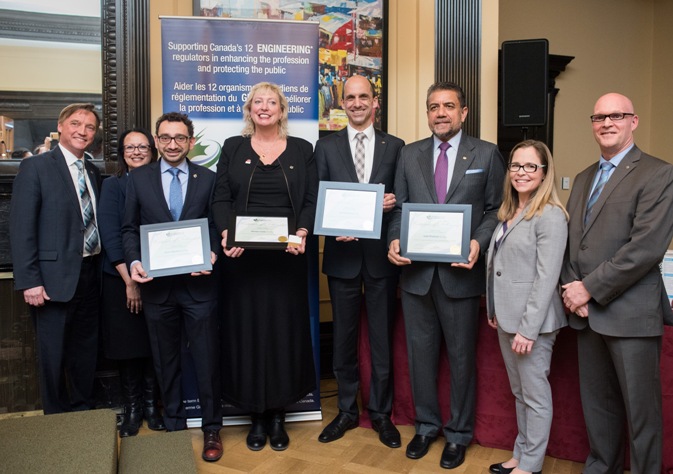
Professional engineers who have given noteworthy service to the engineering profession through their work with either Engineers Canada or the provincial and territorial regulators can be nominated for an Engineers Canada fellowship.
In 2017, 116 engineers were named Fellows of Engineers Canada:
Professional Engineers Ontario
- Md Soharab Uddin Bhuiyan, FEC, P.Eng.
- Amy M. Bilton, FEC, P.Eng.
- Alice Bom, FEC, P.Eng.
- Andre Bom, FEC, P.Eng.
- Mohamed Boutazakhti, FEC, P.Eng.
- Kwok-Wai (Michael) Chan, FEC, P.Eng.
- Tapan Das, FEC, P.Eng.
- Michael Andrew Dowie, FEC, P.Eng.
- Graham Houze, FEC, P.Eng.
- Harsharan (Jeff) Hujan, FEC, P.Eng.
- Marios Ioannidis, FEC, P.Eng.
- Steve Ireland, FEC, P.Eng.
- Ahmad Khadra, FEC, P.Eng.
- Yuri Kuzyk, FEC, P.Eng.
- Eduardo (Ted) Maulucci, FEC, P.Eng.
- Donald Marston, FEC, P.Eng.
- Tracy McColl, FEC, P.Eng.
- Muhammad Mudassar, FEC, P.Eng.
- David Perrier, FEC, P.Eng.
- Majid Rahimi-Chatri, FEC, P.Eng.
- Larry E. Seeley, FEC, P.Eng.
- Vladimir Serov, FEC, P.Eng.
- Urmish Shah, FEC, P.Eng.
- Ramesh Subramanian, FEC, P.Eng.
- Uthayan Thurairajah, FEC, P.Eng.
- Warren Turnbull, FEC, P.Eng.
- Ajai Varma, FEC, P.Eng.
- Mingchun (David) Wang, FEC, P.Eng.
- Matthew Weaver, FEC, P.Eng.
- Wong, Wai-Man (Fanny) Wong, FEC, P.Eng.
- Mary A. Wells, FEC, P.Eng.
Engineers PEI
- David Taylor, FEC, P.Eng.
Engineers Geoscientists Manitoba
- Neemee Rose Batstone, FEC, P.Eng.
- Glen Nowlan Cook, FEC, P.Eng.
- Stacy Robert Joseph Cournoyer, FEC, P.Eng.
- Jonathan Andrew Epp, FEC, P.Eng.
- Ramkrishna Maruti Godse, FEC, P.Eng.
- Nikhil Handa, FEC, P.Eng.
- Robin Leigh Hutchinson, FEC, P.Eng.
- Richard Mervyn Jones, FEC, P.Eng.
- Albert David Myska, FEC, P.Eng.
- Wenyue Wu, FEC, P.Eng.
- Kasmir Robert Zurek, FEC, P.Eng.
- Amber Anderson Skrabek, FEC (Hon.)
Engineers Nova Scotia
- Paul W. Currie, FEC, P.Eng.
- Nelson Ferguson, FEC, P.Eng.
- Katherine M. MacLeod, FEC, P.Eng.
- Darrin McLean, FEC, P.Eng.
- Donald L. Russell, FEC, P.Eng.
- Surinder Sarwal, FEC, P.Eng.
Association of Professional Engineers and Geoscientists of Alberta
- Clay Bos, FEC, P.Eng.
- Peter Daniel Burns, FEC, P.Eng.
- Ram Chadha, FEC, P.Eng.
- Marcella Fiorillo deJong, FEC, P.Eng.
- Nima Dorjee, FEC, P.Eng.
- Steve Huber, FEC, P.Eng.
- Jey Jeyakumar, FEC, P.Eng.
- Alex Kanevski, FEC, P.Eng.
- Trevor Myles Loomer, FEC, P.Eng.
- Vivianne Lai On Mansour, FEC, P.Eng.
- Jay Nagendran, FEC, P.Eng.
- Todd K. Simenson, FEC, P.Eng.
- Robert Montgomerie Watson, FEC, P.Eng.
- David T. Westwick, FEC, P.Eng.
Professional Engineers and Geoscientists of Newfoundland and Labrador
- Neil Cleary, FEC, P.Eng.
- Sherry Freake, RN, FEC (Hon.)
- Terry Gardiner, FEC, P.Eng.
- Natalie Hallett, FEC, P.Eng.
- Renee Hodder, FEC, P.Eng.
Ordre des ingénieurs du Québec
- Nadim Abou-Chacra, FIC, ing.
- Ghislain Boivin, FIC, ing.
- Jacques Lamarre, FIC, ing.
- André Loiselle, FIC, ing.
- Wilfrid Morin, FIC, ing.
- Jean-Guy René, FIC, ing.
- Alain Saladzius, FIC, ing.
Association of Professional Engineers and Geoscientists of Saskatchewan
- Daryl M. Andrew, FEC, P.Eng.
- Dean Elliott, FEC (Hon.)
- Terrance A. Fonstad, FEC, P.Eng.
- Kevin W. Hudson, FEC, P.Eng.
- Kim J. Junek, FEC, P.Eng.
- Lori J. Matthews, FEC, P.Eng.
- Terence W. Monteith, FEC, P.Eng.
- Robert A. Schultz, FEC, P.Eng.
- Jaime N. Tratch, FEC, P.Eng.
Engineers and Geoscientists British Columbia
- Oliver John Hans Bonham, FEC (Hon.), P.Geo., FGC
- James Ryland Branson, FEC, P.Eng.
- Wing-Yun William Cheung, FEC, P.Eng.
- Neil Alexander Cumming, FEC, P.Eng.
- Conrad Victor Desrosiers, FEC, P.Eng.
- Andrew Ross Gower, FEC, P.Eng.
- Rishi Gupta, FEC, P.Eng.
- Jamie Mark Malthus, FEC, P.Eng.
- Duane Ernest Marriner, FEC, P.Eng.
- Donald Stephen Mavinic, FEC, P.Eng.
- Craig Stanley Merkl, FEC, P.Eng.
- Mukesh Nagpal, FEC, P.Eng.
- Brendan Gregory Nicholas, FEC (Hon.), P.Geo.
- Deesh Olychick, FEC (Hon.)
- Julie Loughlin Orban, FEC (Hon.), P.Geo.
- Eric Charles Pettit, FEC, P.Eng.
- Markus Rolf Sirges, FEC, P.Eng.
- James Daniel Sosiak, FEC, P.Eng.
- Timothy James Ryce, FEC, P.Eng.
- Andrew Donald Watson, FEC, P.Eng., Struct.Eng.
- Allan Douglas Zackodnik, FEC, P.Eng.
Engineers Yukon
- Brian Ethan Crist, FEC, P.Eng.
Engineers Geoscientists New Brunswick
- David J. Coleman, FEC, P.Eng.
- Guida Bendrich, FEC, P.Eng.
- Gilles C. Roy, FIC, ing.
- Richard J. Scott, QC, FEC (Hon.)
Special recognitions issued by Engineers Canada
- Omar Alghabra, FEC, P.Eng.
- Steven Blaney, FIC, ing.
- Sukh Dhaliwal, FEC, P.Eng.
- Marilyn Gladu, FEC, P.Eng.
13. Our culture
a. The Journey to Excellence

Having been certified at the bronze level of Excellence Canada’s Excellence, Wellness, and Innovation Standard in December 2016, Engineers Canada built on this commitment for its Journey to Excellence in 2017. A focus on establishing a continuous improvement culture supported progress in the five areas of the Standard—leadership, planning, customer, people, and process. Highlights of 2017 achievements include integrating continual improvement concepts into planning processes; leadership and staff together defining organizational values; staff noting visible improvements to Engineers Canada’s internal communications; the establishment of a Human Resources Working Group to provide input and staff perspectives to Engineers Canada’s Human Resource programs, policies, and initiatives; and the delivery of an employee training program in process management with a first cohort obtaining process management certification. These, and other continuous improvement efforts, will ultimately enhance the organization’s ability to serve the engineering profession.
b. National Capital Region’s Top 100 Employers
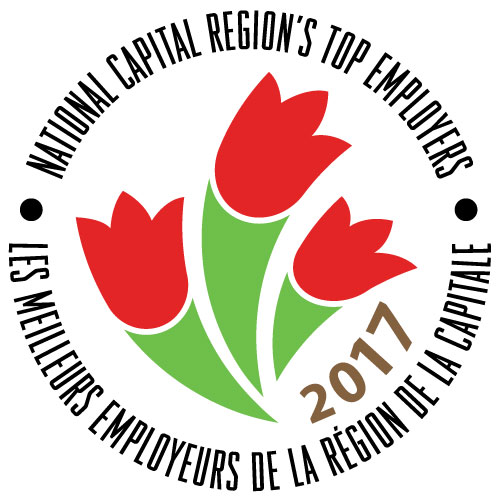 In April 2017, Engineers Canada was recognized as one of the 2017 National Capital Region’s Top Employers. This special designation recognizes the employers in the Ottawa-Gatineau metropolitan area that lead their industries in offering exceptional places to work. Engineers Canada was selected for a number of reasons, including its support for new mothers, fathers, or adoptive parents, its paid leave, and its charitable giving.
In April 2017, Engineers Canada was recognized as one of the 2017 National Capital Region’s Top Employers. This special designation recognizes the employers in the Ottawa-Gatineau metropolitan area that lead their industries in offering exceptional places to work. Engineers Canada was selected for a number of reasons, including its support for new mothers, fathers, or adoptive parents, its paid leave, and its charitable giving.
c. Charitable giving
Engineers Canada staff continued to demonstrate their deep community involvement and volunteerism in 2017:
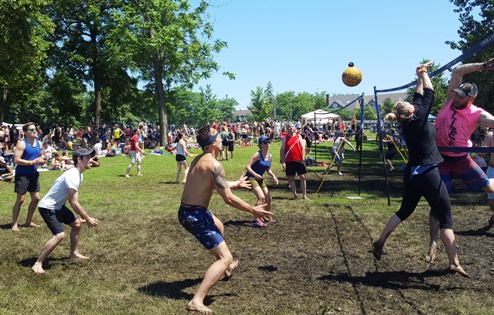

- In July, Engineers Canada staff participated in the HOPE Beach Volleyball tournament, and contributed over $1,200 to six local charities that included Children at Risk, Ottawa Community Housing, the Shepherds of Good Hope, Dress for Success Ottawa National Capital Region, the Sexual Assault Support Centre, and the Waupoos Foundation.
- Engineers Canada staff voluntarily donate to the Canadian Engineering Memorial Foundation (CEMF) through a payroll deduction.
- In December, the Engineers Canada Social Committee and staff donated $1,350 to Live Work Play as part of its holiday charitable giving. Live Work Play helps the community welcome people with intellectual disabilities to live, work, and play as valued citizens.
- Also in December, Engineers Canada organized a holiday food drive that collected 162 kilograms of food and gifts for the Ottawa Food Bank.
14. Our members
Engineers Canada is the national association of the 12 provincial and territorial engineering regulators in Canada.
15. Our people
Board of Directors
Directors
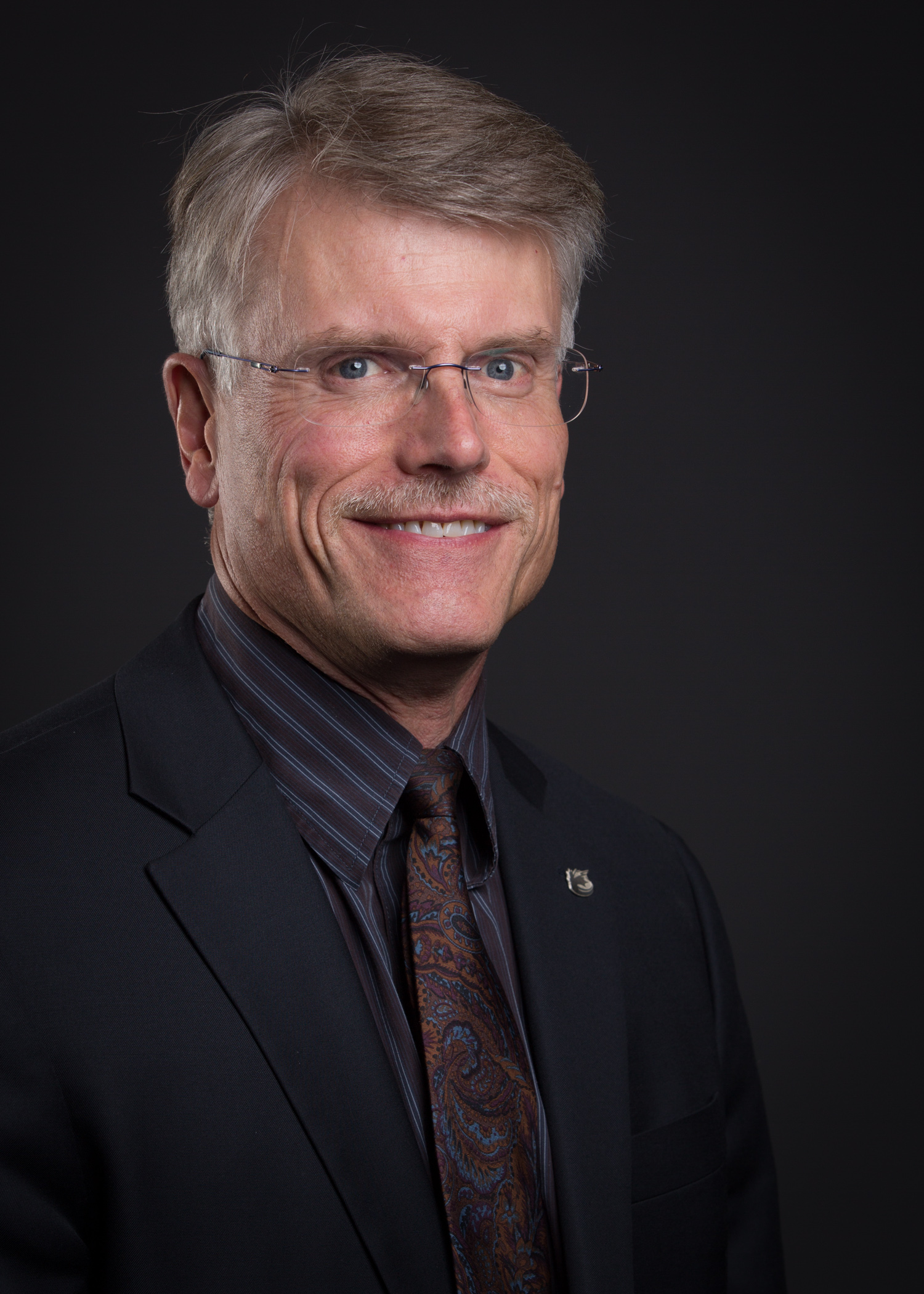
Russ Kinghorn, FEC, P.Eng.
President
British Columbia
Principal, Kinghorn Systems Engineering
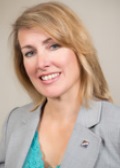
Annette Bergeron, FEC, P.Eng.
President-elect
Ontario
Principal, Bergeron Consulting
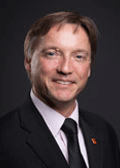
Chris D. Roney, FEC, BDS, P.Eng.
Past-President
Ontario
President and Senior Structural Engineer, Roney Engineering Ltd
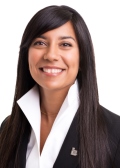
Kathy Baig, ing., FEC, MBA
Quebec
President, Ordre des ingénieurs du Québec
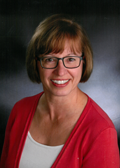
Jean Boudreau, FEC, P.Eng.
New Brunswick
Principal and Senior Transportation Engineer, GEMTEC Limited
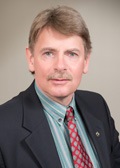
Terry Brookes, FEC, P.Eng.
Northwest Territories
Assistant Director Airport Facilities, Department of Transportation, Government of the Northwest Territories
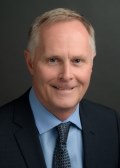
David W. Brown, P.Eng., BDS, C.E.T.
Ontario
Managing Director – TaskForce Engineering Inc.
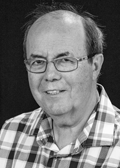
Louis Champagne, FIC, ing.
Quebec
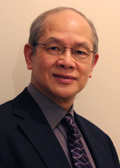
Danny Chui, FEC, P.Eng.
Ontario
Manager, Capital Works, Exhibition Place
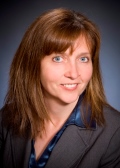
Sarah Devereaux, M.Eng., FEC, P.Eng.
Nova Scotia
Partner, Dillon Consulting Ltd.
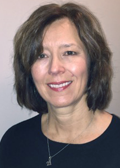
Lisa Doig, MBA, FEC, P.Eng.
Alberta
Principal, O’Doig Consulting
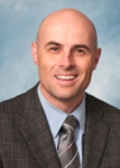
Justin Dunn, FEC, P.Eng.
Prince Edward Island
Director, Facilities Management, Holland College

Gary Faulkner, PhD, FEC, FGC (Hon.), P.Eng.
Alberta
Director, Rehabilitation Research and Technology Development, Alberta Health Services
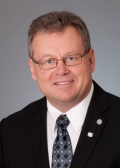
Dwayne Gelowitz, FEC, P.Eng., FCSCE
Saskatchewan
Principal, Water Sector Lead, Stantec Consulting Ltd.
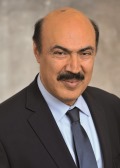
Zaki Ghavitian, M.ing., FIC, ing.
Quebec
Director, Programming and Cost Control, Engineering, Procurement and Construction Group, Hydro Québec
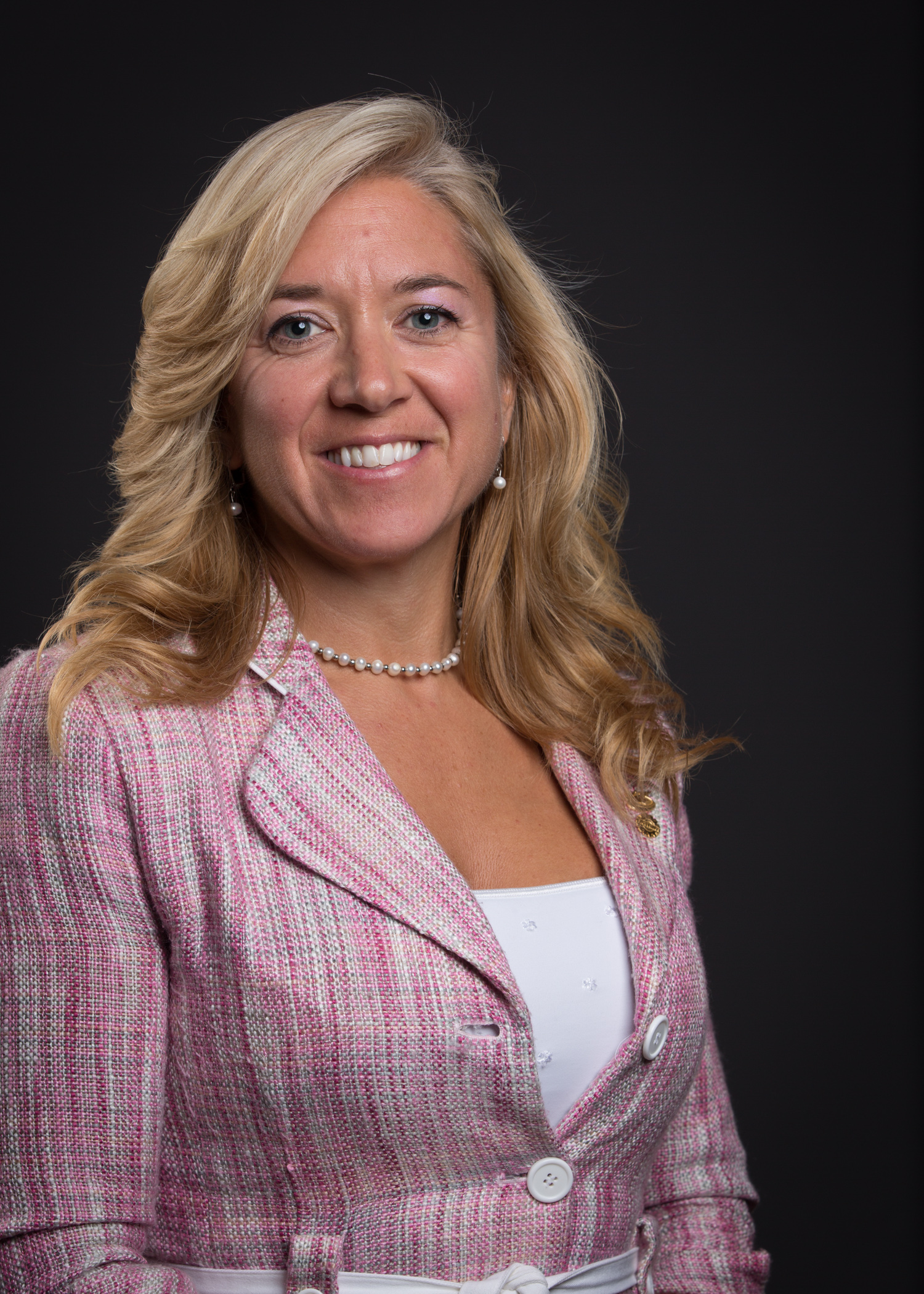
Sandra Gwozdz, FIC, ing.
Quebec
Project Engineer, Bombardier Aerospace

Jeff Holm, FEC, P.Eng., FGC (Hon)
British Columbia
Senior Infrastructure Manager, Allnorth Consultants Limited

William C. Hunt, FEC, P.Eng.
Newfoundland and Labrador
Engineering Manager at Molson Coors Canada
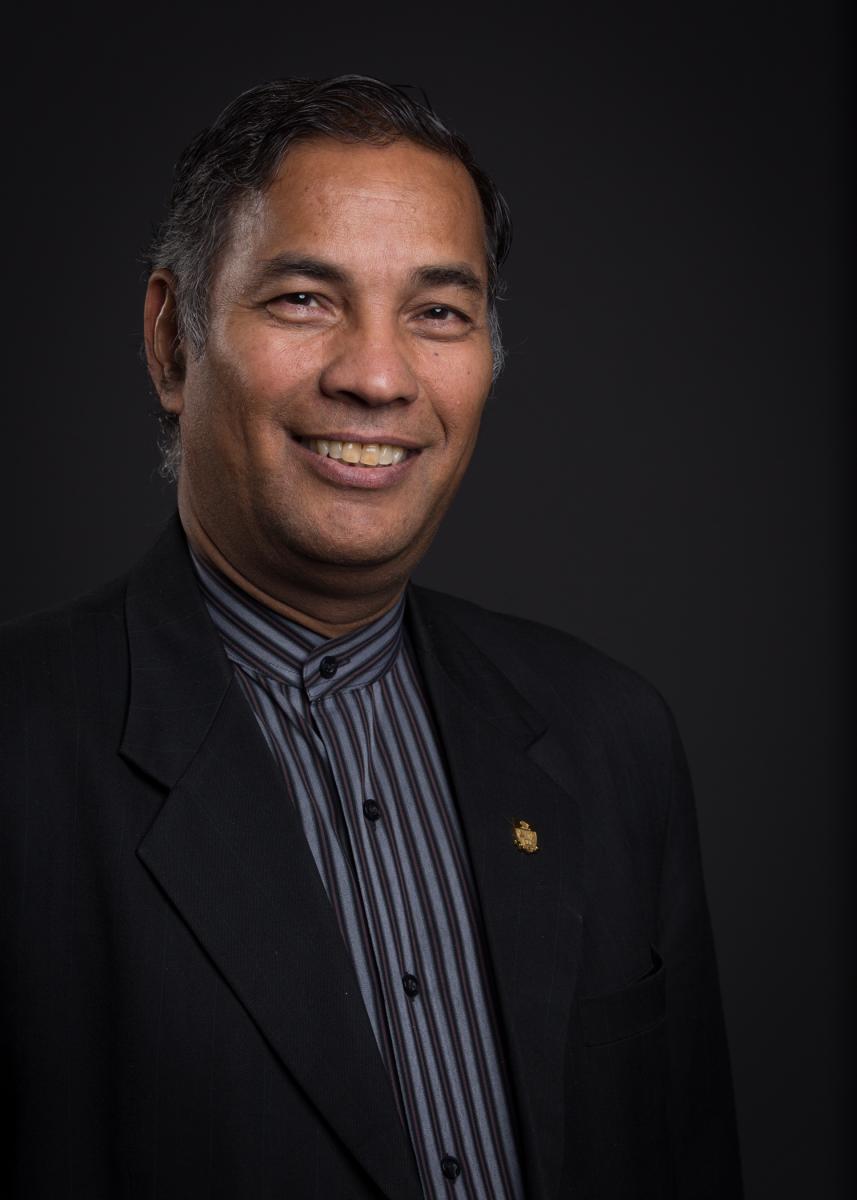
Digvir S. Jayas, FCAE, FEIC, FEC, P.Eng.
Manitoba
Vice-President (Research and International) and Distinguished Professor Biosystems Engineering, University of Manitoba

David T. Lynch, PhD, P.Eng., FCAE, FEC, FEIC, FCIC, FGC (Hon.)
Alberta
Professor Emeritus (Chemical Engineering), University of Alberta
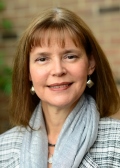
Connie Parenteau, FEC, FGC (Hon), P.Eng.
Alberta
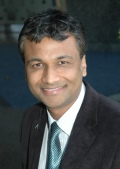
Rakesh Shreewastav, FEC, P.Eng., AVS
Ontario
Manager, Civil Infrastructure, MetroLinx
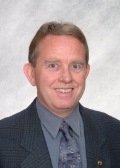
Richard Trimble, FEC, P.Eng.
Yukon
Principal Consultant – Arctic Region, Engineering Practic
Advisors

Ann English, P.Eng.
Chief Executive Officer and Registrar, APEGBC
Chair, Chief Executive Officers Group

D Wayne MacQuarrie, FEC, P.Eng.
Chair, Accreditation Board
(Retired) Chief Executive Office of Prince Edward Island Energy Corporation

Dennis K. Peters, P.Eng., Ph.D., FEC
Chair, Qualifications Board
Associate Professor and Head of Electrical and Computer Engineering at Memorial University
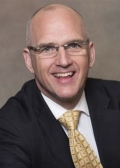
Gerard McDonald, MBA, P.Eng.
Chief Executive Officer, Engineers Canada
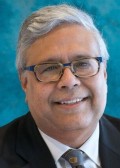
Ishwar K. Puri
Chair, National Council of Deans of Engineering
and Applied Science (NCDEAS)
Staff
Current as of May 2018
- Aude Adnot-Serra
- Heather Anderson
- Maria Arrieta
- Susan Bourgon
- Colin Brown
- Julia Chehaiber
- Catherine Christofferson
- Jessica Christou
- Marie Claverie
- Chantal Colavizza
- Lisa Dennis
- Randa Dirani
- Frank Farrell
- Shelley Ford
- Brent Gibson
- Linda Gray
- Willow Guy
- Vicki Kelly
- Johanne Lamarche
- John Langlois
- David Lapp
- Lucy Lefebvre
- Marlene McCourt
- Gerard McDonald
- Emily McParland
- Ryan Melsom
- Jorge Monterrosa
- David Moreira
- Ivan Ntale
- Alexandra Olivas
- Martha Oram
- Mélanie Ouellette
- Christina Paultre
- Cassandra Polyzou
- Stephanie Price
- Vinicius Rossi
- Emily Rowan
- Carole Roy
- Lorelei Scott
- Daphne Smith
- Kyle Smith
- Jeanette M. Southwood
- Evelyn Spence
- Beryl Strawczynski
- Joey Taylor
- Heidi Theelen
- Joachim Toelke
- Lynn Tremblay
- Dan Villeneuve
- Lynn Villeneuve
- Mya Warken
- Doris Yee
16. Our sponsors
Engineers Canada thanks its partners for their ongoing support and contributions to its 2015 Annual General Meeting and Awards event.
Platinum

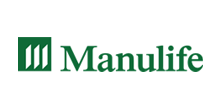
Silver

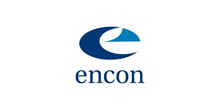
Bronze
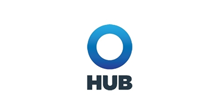
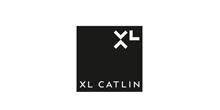
Supporter
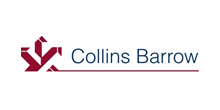
Friends
